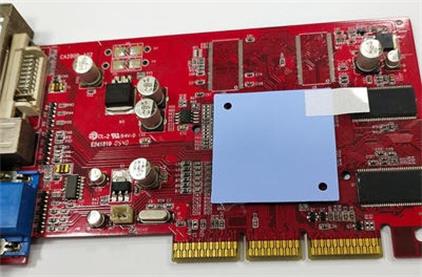Precautions for using a silicon thermal pad on a laptop
Release time:
2023-04-24
Nowadays, most people use laptops. In the past, laptops were chunky, but with the development of technology, laptops are becoming thinner and thinner. Some might say it's because the interior parts are smaller and lighter, but it's only a minor aspect. The main reason is that the components used to dissipate heat are smaller and more efficient. In order to achieve good heat dissipation effect, silica gel thermal conductive sheet is essential. To understand how silicone heat transfer sheets work on laptop heat dissipation, you need to know how to use silicone heat transfer sheets on a laptop.

Nowadays, most people use laptops. In the past, laptops were chunky, but with the development of technology, laptops are becoming thinner and thinner. Some might say it's because the interior parts are smaller and lighter, but it's only a minor aspect. The main reason is that the components used to dissipate heat are smaller and more efficient. In order to achieve good heat dissipation effect, silica gel thermal conductive sheet is essential. To understand how silicone heat transfer sheets work on laptop heat dissipation, you need to know how to use silicone heat transfer sheets on a laptop.
1. Where should silicone heat conductive sheet be used?
Laptops are different from desktop computers. Because the desktop computer has large space, you can install cooling fans on some important components of the chassis and mainboard, such as the power box, CPU, and graphics card. Cooling fans will be installed in these locations. There is even a fan on the side panel of the case. But with laptops, space is limited and weight is being lost, so widespread fan use is not possible. However, the main components that need heat dissipation are the CPU, the north-south bridge, the graphics card, but they are essential. If you want good heat dissipation, you can paste silicone heat conductive sheet in the corresponding position to improve the heat dissipation effect.

2. Where is the silicone heat conductive sheet mainly used?
Before understanding how many millimeters of notebook silicon heat conduction pad should be used, we explain that most notebook cpus on the market are mainly heat dissipation by fans, but the fan in the host often plays a role in heat dissipation. The silicone thermal conductive sheet is mainly used for heat dissipation of the chip, so a silicone thermal conductive sheet is pasted on the chip during installation, and then the fan heat pipe is connected to it, which can improve the heat dissipation efficiency of the silicone thermal conductive sheet. Fan running pad will be improved. However, a few laptops have eliminated the CPU fan, which can only use silicone heat conductive sheets to dissipate heat.
3. How thick is the laptop's silicone heat conductive sheet?
Because of the lightweight characteristics of notebook, basically all manufacturers are pursuing thin and light, which puts forward very high requirements on the heat dissipation of notebook computers. Laptop silicone heat conduction sheet should use how many millimeters? In fact, there are no hard and fast rules or standards for how thick it needs to be. Generally, it depends on the laptop itself. If the laptop is thick, you can use a thicker one. Modern manufacturing techniques have advanced considerably, so the thickness of the notebook itself has been raised to between 1-2mm.
